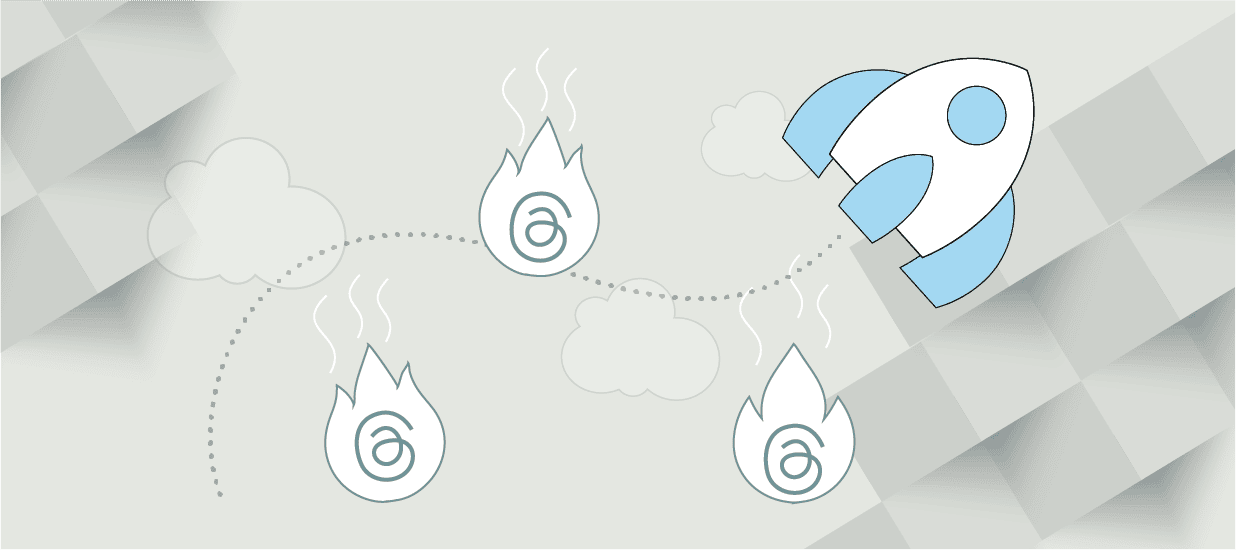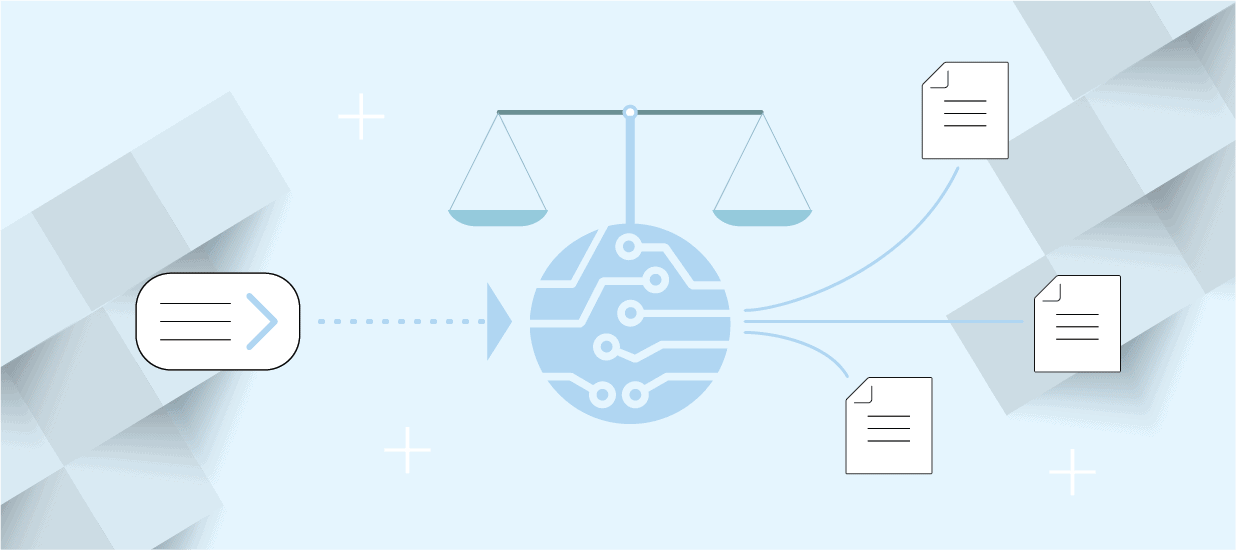5 minute read
What can you learn about avoiding product launch failure from Threads? Our expert talks about what the fastest rise, steepest fall, and most expensive learning curve in social media history can teach us about product launches.
Picture this: It’s July 2023, and Mark Zuckerberg just pulled off what seemed impossible. His new app, Threads, signed up 100 million users in five days. That is faster than ChatGPT, faster than TikTok, faster than any app in history. Tech journalists were calling it the “Twitter killer.” News about its lightening-fast growth was covered in mainstream publications like Time.
Then reality hit.
Within two weeks, 80% of those users had essentially abandoned the app. Time spent plummeted from 20 minutes a day to about 3 minutes. Daily users crashed from 49 million to just 8 million by the end of July. For most apps, this would have been the end of the story. Game over. Move on.
But Meta had the resources to invest and recover. They put money into the platform and used other means, like paying influencers, to try and regain ground. By April 2025, Threads had clawed its way back to 350 million users. While that number represents significant recovery, it tells only part of the story. Threads never achieved (or at least not yet) the cultural relevance or daily engagement that defines truly successful social platforms. It became a solid alternative to X, but not the industry-defining force its explosive launch suggested it could be.
More importantly, those brutal first months carried lasting costs: lost network effects, diminished user trust, and missed momentum that competitors used to reestablish themselves. The question isn’t whether Threads ultimately found its footing, but whether the rocky launch prevented it from reaching its true potential.
The real lesson? Even with near-infinite resources and the perfect market opportunity, fundamental strategic mistakes can turn your dream launch into an expensive, public learning experience.
The “We’re Not Twitter” Product Positioning Problem
One of the first red flags wasn’t in Threads’ code or features, it was in how Meta talked about it. Here’s how they positioned their platform:
“A Happier Place” – Meta promised Threads would be friendlier and more welcoming than Twitter’s often toxic environment. They leaned heavily on their community standards and massive user base to signal safety and scale.
“A More Accessible Option” – As frustrated Twitter refugees scattered to niche platforms like Mastodon and invitation-only Bluesky, Threads emerged as the first truly accessible, mass-market alternative that didn’t require a computer science degree to figure out.
“A Future in the Open Web” – Unlike Twitter’s increasingly closed ecosystem under Elon Musk, Meta promised Threads would support ActivityPub, allowing users to take their content anywhere. It was a direct shot at Twitter’s decision to kill third-party apps.
Sounds smart, right? Here’s the problem: every single selling point was essentially “We’re what Twitter isn’t.”
Why This Backfired Spectacularly
When you position yourself as “the better version of Y,” you’re not actually solving people’s problems; you’re just pointing out that Y has problems. And here’s the kicker: if Y fixes those problems (or if the novelty wears off), what’s your reason for existing?
Threads fell into what I call the competitive positioning trap. Instead of creating a unique identity, they invited direct comparisons. Every missing feature felt broken because users expected a complete Twitter alternative, not a new type of platform.
Even worse, Meta misread the room entirely. When users complained about Twitter’s toxicity, Meta heard “we want happier content.” But what users actually wanted was quality and trust; they were tired of spam, bots, and algorithmic manipulation, not just mean tweets.
The result? Early Threads felt like Twitter with training wheels. It was familiar enough to disappoint; different enough to confuse.
The 30-Second Product Positioning Test
Before you launch, try this: Explain your value proposition to someone without mentioning any competitors. Sure, competitor references can be helpful when used as context but just being different isn’t a solid primary differentiator.
If you can’t do it in 30 seconds without saying “We’re like X but better” or “We’re X without the problems,” you don’t have positioning, you have a reaction.
Real product positioning creates demand. Reactive positioning just redistributes it temporarily.
When “Minimum Viable Product” Means “Broken
Let’s talk about Threads’ MVP strategy, because this is where good intentions met harsh reality.
An MVP should be the smallest version of your product that still delivers genuine value. The keyword there is value, not just functionality, but something people actually want to use repeatedly. Threads looked like Twitter, posted like Twitter, but felt like a hollow shell of Twitter.
Here’s what was missing on day one:
- No way to discover content – No hashtags, no trending topics, no search
- No desktop experience – Just a read-only web version that felt like an afterthought
- No private conversations – No DMs meant no way to have side conversations
- No community features – Following people was about all you could do socially
Imagine showing up to what you thought was a party, only to find an empty room with a microphone. Sure, you can talk, but there’s no music, no other conversations to join, and no way to find the interesting people. That’s what early Threads felt like.The cruel irony? Meta had the resources to build all these features. They just chose not to, betting that Instagram integration would carry them through until they could ship the missing pieces. More importantly, they rushed to market to capitalize on X’s turmoil rather than launching when the product was truly ready.
This is a classic case of timing pressure overriding product readiness. The opportunity felt too good to miss. Twitter was in chaos, users were looking for alternatives, and Meta had the distribution advantage through Instagram. So they launched with a half-finished product, assuming they could iterate their way to success.The assumption proved costly.
The Real MVP Product Launch Lesson
Here’s what Threads teaches us about MVPs and timing pressure: market opportunity doesn’t excuse product incompleteness. Yes, there was a window when Twitter users were frustrated and looking for alternatives. But launching an incomplete product into that window meant disappointing precisely the users who were most motivated to switch.
Users will forgive missing bells and whistles. They won’t forgive being unable to do the main thing they came for. And they especially won’t forgive it when they’ve just left another platform because it wasn’t meeting their needs.
The Minimum Viable Product Reality Check
Before calling something an MVP, ask:
- Can users accomplish their primary goal end-to-end?
- Are they likely to come back tomorrow for the same reason they signed up today?
- If a competitor launched the exact same feature set, would you feel confident?
When Vanity Metrics Hide the Real Story
It was a brilliant distribution strategy: allow Instagram users to open Threads, tap once, and keep the same handle and follow list. This enabled Threads to onboard millions instantly and create those record-breaking headlines.
But this was a necessary, not sufficient, condition for success.
The problem with chasing impressive launch numbers is that they don’t measure sustainable engagement or user satisfaction. Threads’ 100 million signups in five days created amazing press coverage, but the metrics that actually predicted long-term success told a different story:
What the headlines celebrated:
- 100 million signups in 5 days
- Fastest app growth in history
- 2 million users in the first 2 hours
What actually mattered:
- Daily active users dropped 80% within weeks
- Time spent fell from 19 minutes to 2.9 minutes
- Users weren’t creating content, just browsing
The lesson: Launch metrics that make great press releases rarely predict long-term product success. Focus on behavioral indicators that show users are getting real value: return visits, feature adoption, content creation, and organic referrals.
What Threads Got Right: The Feedback Loop
Amid all the strategic missteps, Threads did demonstrate one thing exceptionally well: how to engage with users and iterate quickly based on feedback.
Meta explicitly encouraged feedback in Threads’ first weeks. CEO Mark Zuckerberg and Instagram head Adam Mosseri actively engaged with users’ posts and complaints, creating a culture of open dialogue. Mosseri was particularly responsive on the platform, directly addressing user frustrations and discussing upcoming fixes.
In one candid post, Mosseri acknowledged that “tons of basics…are missing: search, hashtags, a following feed, [fediverse] support, messaging maybe…We’re on it. The team is cranking away.”
Meta moved quickly on achievable improvements. Within the first month, they shipped chronological feeds, post translations, liked-posts pages, improved follow/follower management, and better content controls. These changes made a noticeable difference and showed users that Meta was genuinely listening.
However, the more fundamental features—DMs, post editing, trending topics, full web functionality, and ActivityPub support—took much longer to deliver. Some arrived months later, others are still being rolled out.
The crucial insight: Responsive feedback loops are critical, but they can’t fix fundamental value proposition problems. Even with excellent execution on user requests, Threads still experienced massive churn because the core positioning and feature gaps remained unresolved.
Feedback loops are essential for optimization, but they can’t substitute for getting your strategic foundation right from the start.
What Threads Teaches About Product Launch Strategy
Threads didn’t fail, but it didn’t exactly triumph either. It launched into a perfect storm of opportunity and still stumbled. Its recovery, while impressive, came at a high cost: lost trust, missed momentum, and a product that had to earn its way back into relevance. Meta had the resources to survive that kind of stumble. Most teams don’t.
Before you launch, ask yourself:
“If our biggest competitor fixed their main problems tomorrow, would our product still matter??
If the answer isn’t a resounding yes, you’re not ready to launch. You’re ready to reposition, rethink your MVP, and avoid Threads’ most expensive mistakes.
The Product Launch Checklist
If you want to avoid a Threads-like situation, you’ll want to be systematic and actively work to avoid the product launch pitfalls highlighted by their troubles.
Before You Launch: Strategy Sanity Checklist
Product Positioning Reality Check
- Can you explain your value without mentioning competitors? (30-second test)
- If your biggest competitor fixed their main problems tomorrow, would customers still choose you?
- Are you solving a real user problem or just pointing out competitor flaws?
MVP Value Validation
- Can users complete their primary goal end-to-end with current features?
- Are missing features truly “nice-to-have” vs. “can’t function without”?
- Are you launching because the product is ready, or because the timing feels right?
Product Launch Success Metrics Sanity Check
- Are you tracking leading indicators (activation, return visits) not just vanity metrics (signups)?
- Do you have realistic expectations for post-launch engagement decline?
- Can you sustain momentum after initial novelty wears off?
First 2 Weeks of Product Launch: Early Warning Signals
Usage Red Flags
- Are users completing onboarding but not returning within 72 hours?
- Is time spent per session declining rapidly (>50% drop)?
- Are users creating value or just consuming it?
Feedback Loop Essentials
- Do you have direct communication channels with early adopters?
- Can you distinguish between feature requests vs. fundamental value gaps?
- Are you shipping quick wins while working on strategic fixes?
Long-Term Defensibility: Can You Hold the Lead?
Defensible Differentiation
- Are you building something competitors can’t easily copy?
- Do you have network effects or user investment that increases switching costs?
- Is your value proposition getting stronger over time, not just solving immediate problems?
And remember – Threads didn’t fail because they lacked resources. They faltered because they launched with positioning that didn’t hold up and an MVP that didn’t deliver.
Learn more about having a successful product launch with the following resources:
Four Barriers to Product Launch Success
Four Steps to Tracking a Successful Product Launch
Prioritize Product Launch Resources with Product Launch Tiers
Do You Have the Right Product Launch Goals?
Author
-

Clarke Smith has over 20 years of experience in product marketing and local marketing strategies. He has leveraged an innovative service model utilizing domestic and offshore resources to plan, execute, and evaluate local marketing programs.
His past roles include Marketing Director at Advance Auto Parts, Marketing Director, Hallmark Business Expressions at Hallmark Cards, Chief Strategy Officer at Brand Muscle, and President at Family Features.
Clarke has deep experience in B2B product marketing in a wide variety of industries. In his teaching at Pragmatic Institute, Clarke offers tactical advice to help learners launch and coordinate exceptional product marketing strategies.
View all posts







